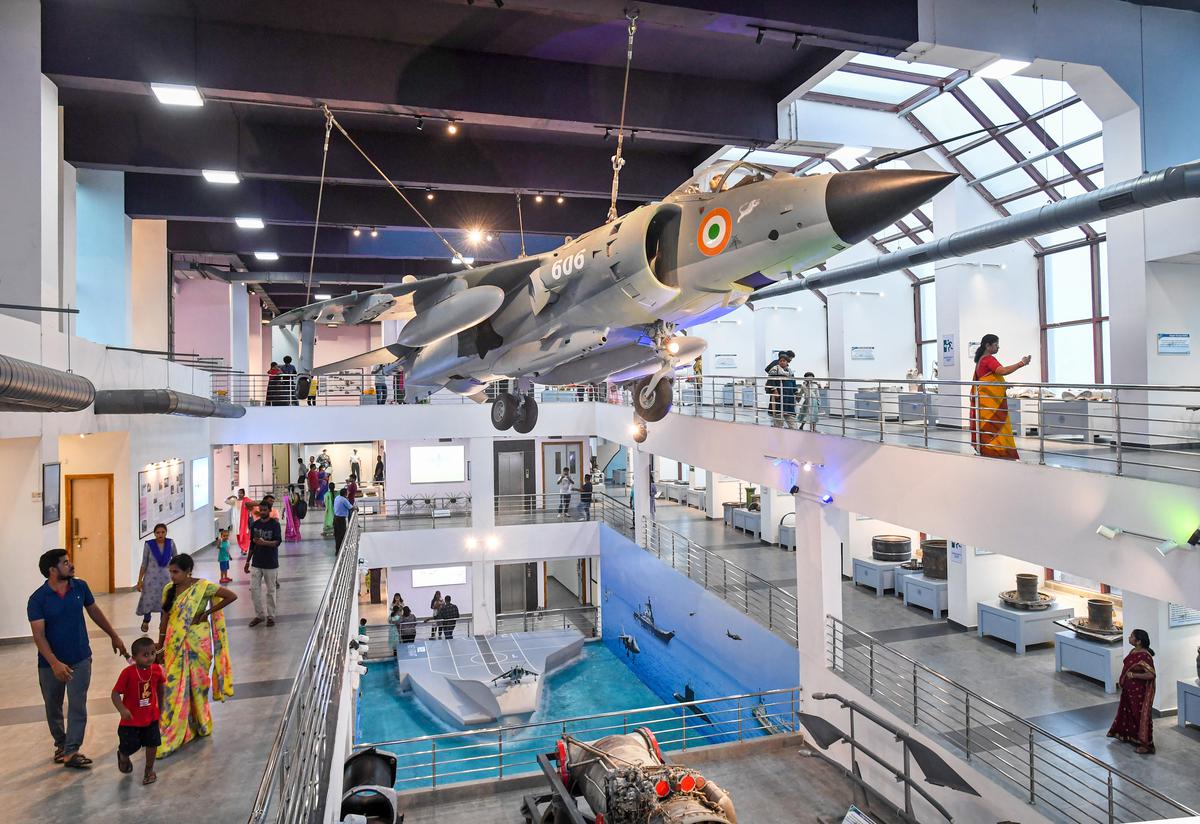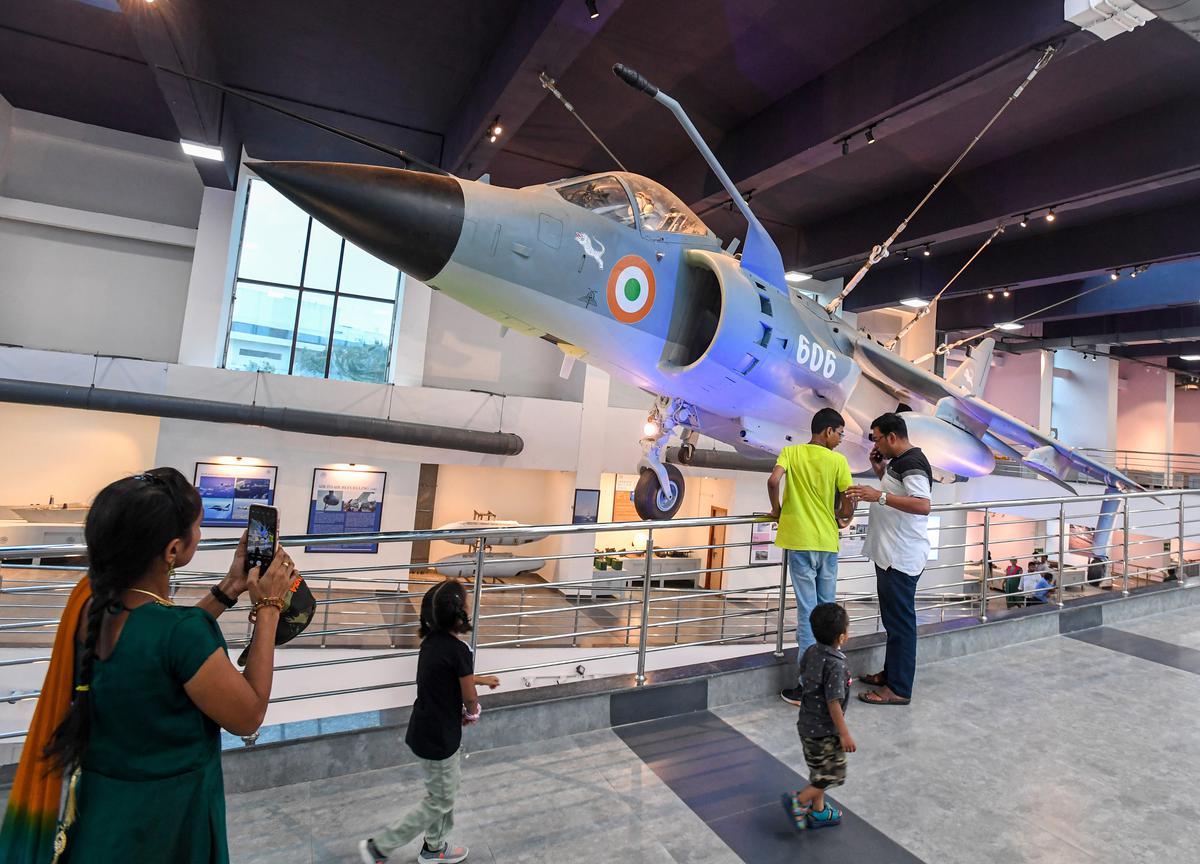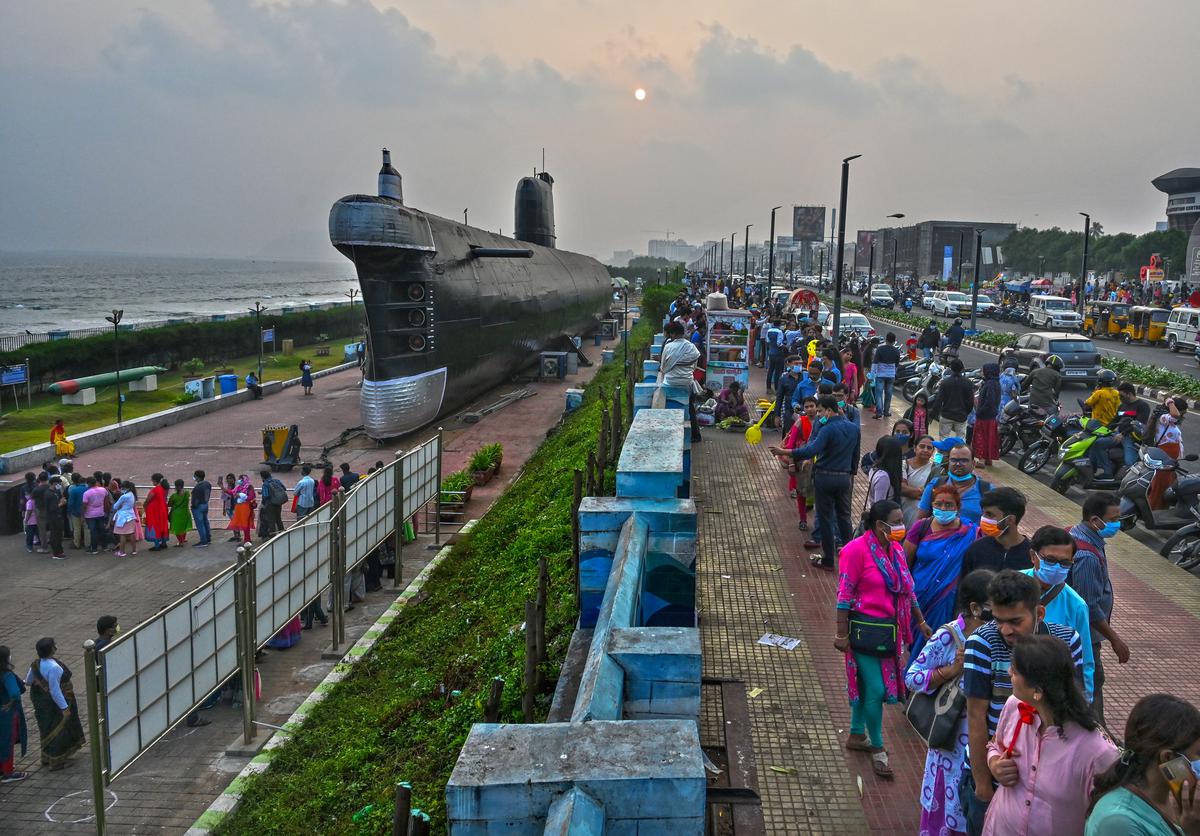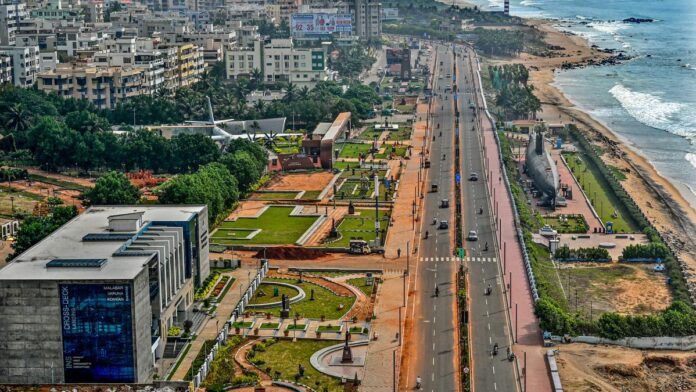
An aerial view of the Integrated Museum and Tourism Complex (IMTC) at the Beach Road in Visakhapatnam featuring the three museums – the recently-opened Sea Harrier Museum, TU – 142 Aircraft Museum and INS Kursura Submarine Museum – showcasing three significant chapters of the Indian Navy.
| Photo Credit: KR Deepak
The Integrated Museum and Tourism Complex (IMTC) at the Beach Road featuring the three museums – Sea Harrier Museum, TU – 142 Aircraft Museum and INS Kursura Submarine Museum – showcases three significant chapters of the Indian Navy and the country’s maritime history.
The Sea Harrier Museum inaugurated recently has been attracting a steady stream of visitors. The British aerospace make jet fighter is highly maneuverable, versatile, and was one of the key weapons of the Indian Navy.

A view of the recently-opened Sea Harrier Museum, the British-made reconnaissance-and-attack aircraft, at the Beach Road in Visakhapatnam.
| Photo Credit:
KR Deepak
At the entrance of the museum, the glass facade says the aircrafts were operational from 1983 to 2016. Inside, there are sections that throw light on the crew. They also demonstrate features such as simulator flying, weapons, radar and electronic warfare, and engineering subsystems.
Visitors to the space first see a figure of a wide-eyed western marsh harrier, a bird of prey, symbolic of imperial power and war, which the Sea Harriers were associated with.
Walk through this section to get an overview of the history of world aviation extending for more than two thousand years, from kites and tower jumping to supersonic and hypersonic flight by powered jets, and the evolution of the world naval aviation.
The next section highlights the induction of the sea harriers in the Indian Navy. The fighter jet was capable of air to air refuelling to operate at extended ranges.
An elaborate chart describes the journey of the Sea Harrier that operated from both INS Vikrant and INS Viraat where the use of a ski jump allowed the aircraft to take off from a short flight deck with a heavier load than otherwise possible.
Each section is highlighted with pictures and crisp text, LED displays of significant moments, parts of the fighter jet and audio-visuals. A popular segment features a simulator and its associated components including hydraulic master cylinders, base plates, cockpit, video screens, and instructor’s panels.
The museum is accessible with a ramp that leads up to the towering airframe of the Sea Harrier displayed in a suspended take-off mode from the ceiling of the building. It has so far seen an average of 800 visitors every day over the one week since its opening. “Last Sunday, we received a footfall of over 1,500 visitors,” says K V Rao, Manager of Sea Harrier Museum.

A view of the recently-opened Sea Harrier Museum, the British-made reconnaissance-and-attack aircraft, at the Beach Road in Visakhapatnam.
| Photo Credit:
KR Deepak
While the Sea Harrier is the third museum in Visakhapatnam from the decommissioned aircraft and submarines of the Indian Navy, INS Kursura submarine museum was the first one to be set up in August 2002 at a cost of ₹ 5 crore by the Visakhapatnam Metropolitan Region Development Authority with assistance from the Indian Navy.
It is the first generation foxtrot submarine that was commissioned at Riga, Russia. This ferocious amphibian played a key role in the 1971 war. The average annual footfall to this museum, which is the first submarine museum of South-East Asia, has been about 3.5 to 4 lakhs and the museum sees on an average 1,050 visitors daily.

Tourists stand in long queues at the Kursura Submarine museum in Visakhapatnam.
| Photo Credit:
KR Deepak
Right across the road is the TU-142 Aircraft museum, established in the 2017 at a cost of about ₹ 15 crore. This Soviet/Russian maritime reconnaissance and anti-submarine warfare aircraft is a submarine detector and killer. This aircraft was tasked with long-range communications duties along with Soviet ballistic missile capable submarines.
“The initial plan for the IMTC also featured a submarine heritage museum on the evolution of submarines, how it served the Indian Navy and an in-depth understanding on its role. But at present, this project is on hold due to the proposed six-lane beach road corridor project. Once we get some clarity on it, we can proceed,” says Balaram Raju Manthena, superintendent engineer of VMRDA.
The Sea Harrier is a part of the IMTC, wherein visitors can take an integrated ticket (at a lesser cost) for viewing all the three museums. The integrated ticket cost is ₹140 (for an adult) for the three museums. Single ticket for each museum is also available.
#International #Museum #Day #Visakhapatnams #iconic #maritime #museums
